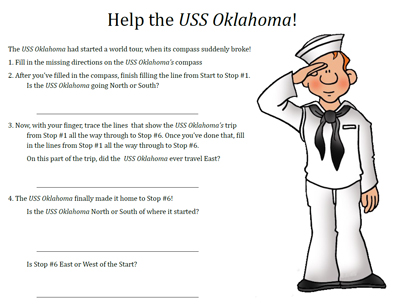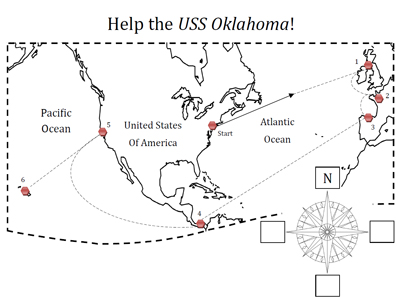
The USS Oklahoma
Activities
Cardinal Directions Activity
Join the Signal Corps
Battleships like the USS Oklahoma travel all over the world, so they need to be able to communicate over long distances. Battleships can also be very noisy, so they need to be able to communicate without words. In order to communicate, the Navy used Morse Code for communicating on radio telegrams over long distances, and Semaphore to communicate when it was too loud for talking.
Semaphore is communicating with flags, where the position of each flag represents a letter. Morse Code uses sequences of long (dash) and short (dot) electronic "beeps" to represent letters.
Below are two alphabets. One is the Morse Code alphabet and the other is the Semaphore alphabet. Use these alphabets to craft your own message to the crew of the USS Oklahoma or translate the example message given below.
Sample message:
"AIR RAID! AIR RAID! GENERAL QUARTERS! THIS IS NO DRILL!"
Semaphore
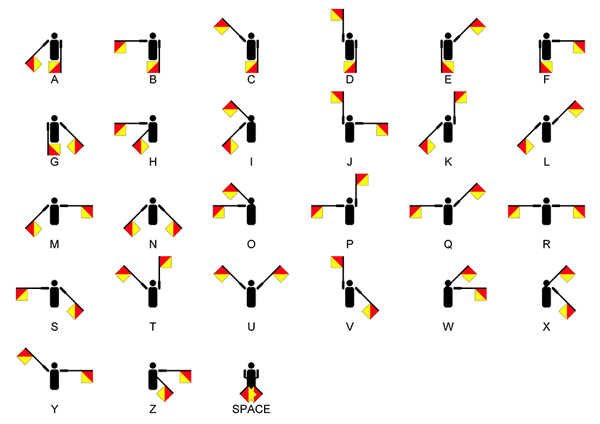
Morse Code

V-mail
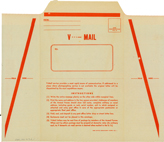
Download V-mail envelope
(Image courtesy of Stalag Luft Prisoners of War).
During World War II, there was no internet or cell phones. Being on board a battleship meant you had no access to telephones either. The best way to communicate with your family and friends was through V-mail, or Victory Mail. These small letters folded into postcard size and only cost 3 cents to mail.
Imagine it is December 1941, and you have been training on board the USS Oklahoma. The attack on Pearl Harbor has not occurred and, while you are preparing for war, you think you are safe in Hawaii. Using the blank V-Mail envelope write a letter home to your family telling them about your experiences in Hawaii and on board the USS Oklahoma.
When you are done, exchange your letter with a partner.
You are now a censorship officer in the US Navy. While the country is preparing for war, you are concerned about information from sailors' letters being intercepted by enemy spies. Your job is to now censor your partner's letter by blacking out any information related to their:
- Location
- Military maneuvers or training operations
- State of the sailor's ship
- Number of crewmembers or ships at the naval base.
Think about and answer these questions when you are done:
- Do you think this censorship was fair? Why or why not?
- Do you think this was done without the sailors' knowledge, or do you think the sailors on the USS Oklahoma knew what they could and could not talk about in letters?
- How is this activity related to the "Loose Lips Might Sink Ships" poster?
- Below is a copy of a V-mail letter sent home by a private in the Army. Are there any censorship marks on his letter? Do you think he knew the rules about what he could and could not talk about in a letter?
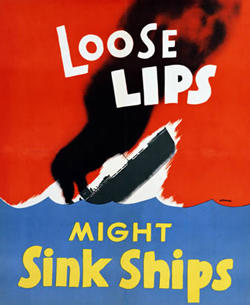
(Image courtesy of Vintage Ad Browser.)
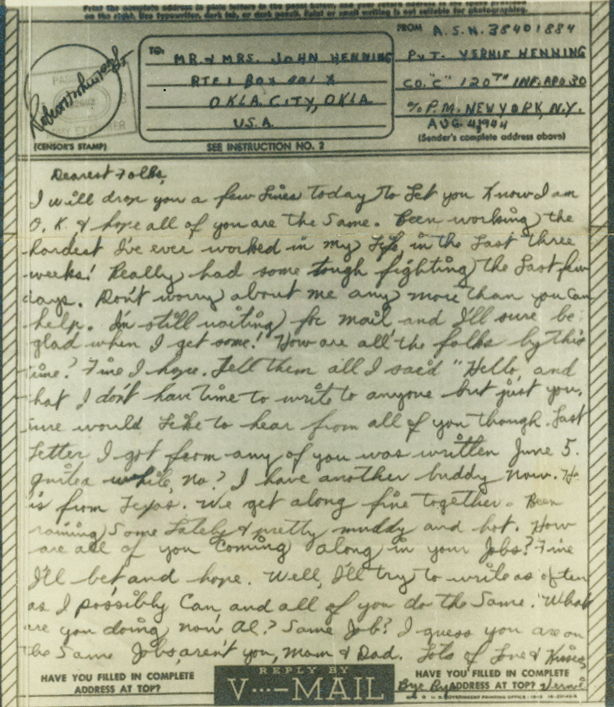
(OHS Collections.)
Propaganda
Propaganda is media that uses words, images, and/or music in order to motivate a group of people to think, feel, or act in a specific way. During World War II, the United States became very good at propaganda and used its messages to motivate the whole country to strive towards one goal: victory in World War II. Propaganda tends to use emotional arguments over logical ones ant to depict its audience as powerful and good and its targets as weak and evil.
Write a paragraph analyzing one of these four posters. While you do that, think about these questions to answer:
- Who is the audience?
- What is the subject of the art? Is there more than one subject?
- Is there a specific emotion that this poster is supposed to evoke?
- Does the poster depict anyone in a negative way? How does it do this?
- Is the poster's message effective? In other words, would it have made you want to join the war effort during World War II?
- Once you have finished writing your paragraph, design your own poster that uses the sinking of the USS Oklahoma to motivate an audience to join the war effort. Remember the questions you tried to answer in your paragraph and make sure others could answer the same questions about your poster.
After finishing your poster, think about a commercial, poster, song, etc., that you have seen. How is it similar to these four examples? How is it different?
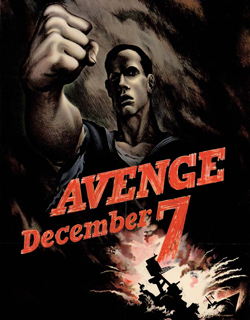
(Image courtesy of the Library of Congress.)
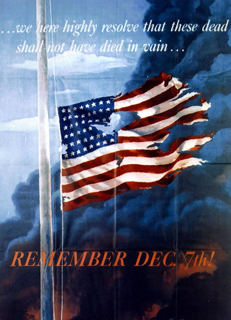
(Image courtesy of the Library of Congress.)
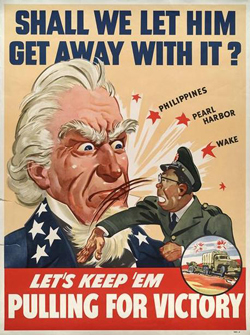
(Image courtesy of the Library of Congress.)

(Image courtesy of the Library of Congress.)

